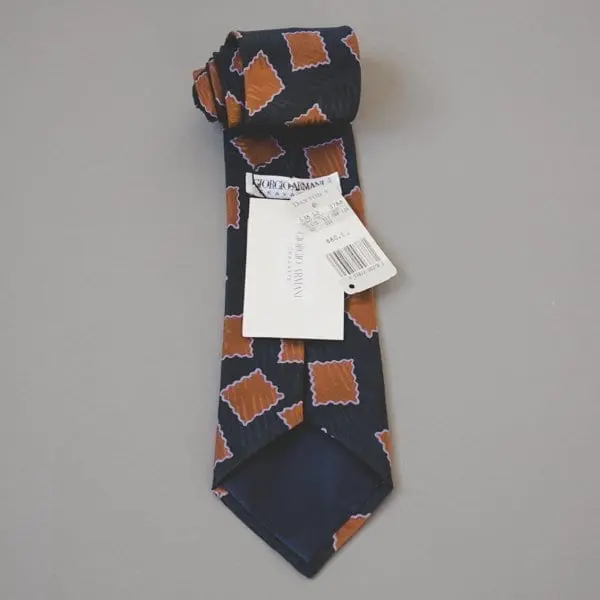Hi, looking at buying one of your products and the condition section says New old stock. What does that mean? How old is it? – Jeffrey
The term “New Old Stock” or N.O.S. is commonly used by resellers to describe an older product, in perfect condition, with original tags or original packaging.
If you’re not familiar with vintage clothing or antiques, then the term can be a little misleading. Read through comments in eBay feedback and you’re going to see that plenty of disputes arise when customers expect a brand new product, but receive something different.
Some of these disagreements must arise from products that are unworn with tags, but stored away for many years in Grandma’s attic.

When meeting with clients, I’ve seen a wide spectrum of New Old Stock clothes, from pristine unworn vintage Oxxford suits to destroyed, sun bleached cashmere sweaters with tags attached from Neiman Marcus.
The value of a new old stock item is highly dependent on how that item was stored. And the question of proper storage comes back to the owner and their reasons for storing away merchandise instead of using it.
When new old stock items are suitable for resale (e.g. in-demand), we have to evaluate the condition objectively, not call them “new” and leave it at that.
The value of a new old stock depends on how the item has been stored.
When marketing these items, we have to specifically connect with the buyer who is seeking older styles. Maybe they collect a certain brand, or they design costumes for Broadway plays, or maybe they just have a nostalgia for style from a certain time period.
Buying and selling New Old Stock clothing can be fun. However, it also comes with certain challenges, and sometimes headaches. To illustrate, here’s a story about our friend George…..
Meet George
George bought an old fixer upper house in the town of New Haven, CT. While working in the attic of the house, he discovers an old wooden chest filled with sneaker boxes. Upon opening them, he sees original packaging from the early 90s. Nike, Converse, New Balance shoes, and they’ve never been worn!
Excited by his discovery, he gives them to his partner Wendy, who is familiar with eBay. She creates some eBay listings, describing the shoes as New-in-box. At a modest price of 65 bucks each, one pair sells in just 3 days to Carl in Dallas, TX.
After receiving the shoes in the mail, Carl opens the package. It’s not good. He expected a basic pair of running sneakers, and these shoes smell musty, like mothballs. He tries them on. While walking through his living room, the rubber sole starts to disintegrate, detaching from the shoe. It’s a real horror show!
What went wrong?
George and Wendy made a few mistakes.
1. They should have noticed a musty smell. Sometimes when you’re surrounded by a certain odor (like that of an old house) then the odor doesn’t register.
2. They didn’t communicate the actual age (in years) of the shoes. This is an easy mistake to make, especially on eBay, where you are forced into the options: new, new-without tag, used, or refurbished. There’s no default option for “new from 1985.”
To be on the safe side and clearly communicate to customers, the sneakers could have been listed under Used goods with a clear description of their unworn condition. They could also be under eBay’s Vintage category.
George and Wendy probably didn’t know that the adhesive in old sneakers can break down over time, or that some people buy old sneakers just to collect, not wear. With the right description, the couple could have made a deal with a collector, instead of poor Carl who just wanted some new workout shoes.
What’s New?
Conventions are somewhat arbitrary when it comes to labeling an item “new old stock.” Is a 3 year old item old stock? Or does it take 10 years? It’s really up to the dealer to decide call it that (or not).
In any case, merchandise should not be called brand new if it has taken a long unexpected detour on the path from maker to customer.
Buying from an experienced reseller means you get brand new when new is expected, and if the item has spent a few decades in Grandma’s attic, you can trust that will be disclosed as well.

